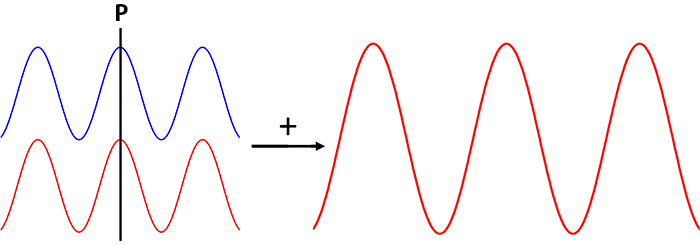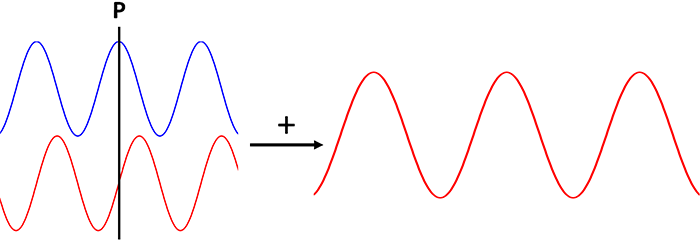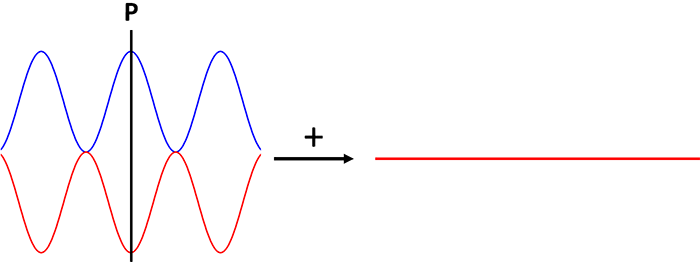Wave Interference
From the superposition principle of waves: Interference is the phenomenon that occurs when two waves are incident on the same point. The total displacement at that point is equal to the sum of the displacements of the individual waves. If a crest of a wave meets the crest of another wave, then the amplitude is the sum of the individual amplitudes; constructive interference. If a crest of one wave meets a trough of another wave, then the amplitude is equal to the difference in the individual amplitudes; destructive interference.
Examples of Interference

Carrying the idea of phase over from the previous section, if we look at the above waves at point P, we can see they are in phase. If these waves were incident on the same point, the resultant wave would be the sum of the two waves, resulting in a wave twice the size.

In the above example, the waves are 90° out of phase and the resultant wave is not nearly as large as the 0° phase constructive interference.

In the above example, the waves can be seen to be 180° out of phase. The crests and troughs of one wave are lining up exactly with opposite in the other wave. The resultant wave is 0, destructive interference.
Knowledge Check:
- What is interference?
- What is destructive interference?
- What is constructive interference?
For further reading on Phase and Interference, including some interactive demos of phase angle, phase difference, and interference, see University of Salford's page on Superposition of Waves.
For further reading on Superposition principle of waves, see Wikipedia page.
For further reading on Interference and wave propagation, see Wikipedia page.